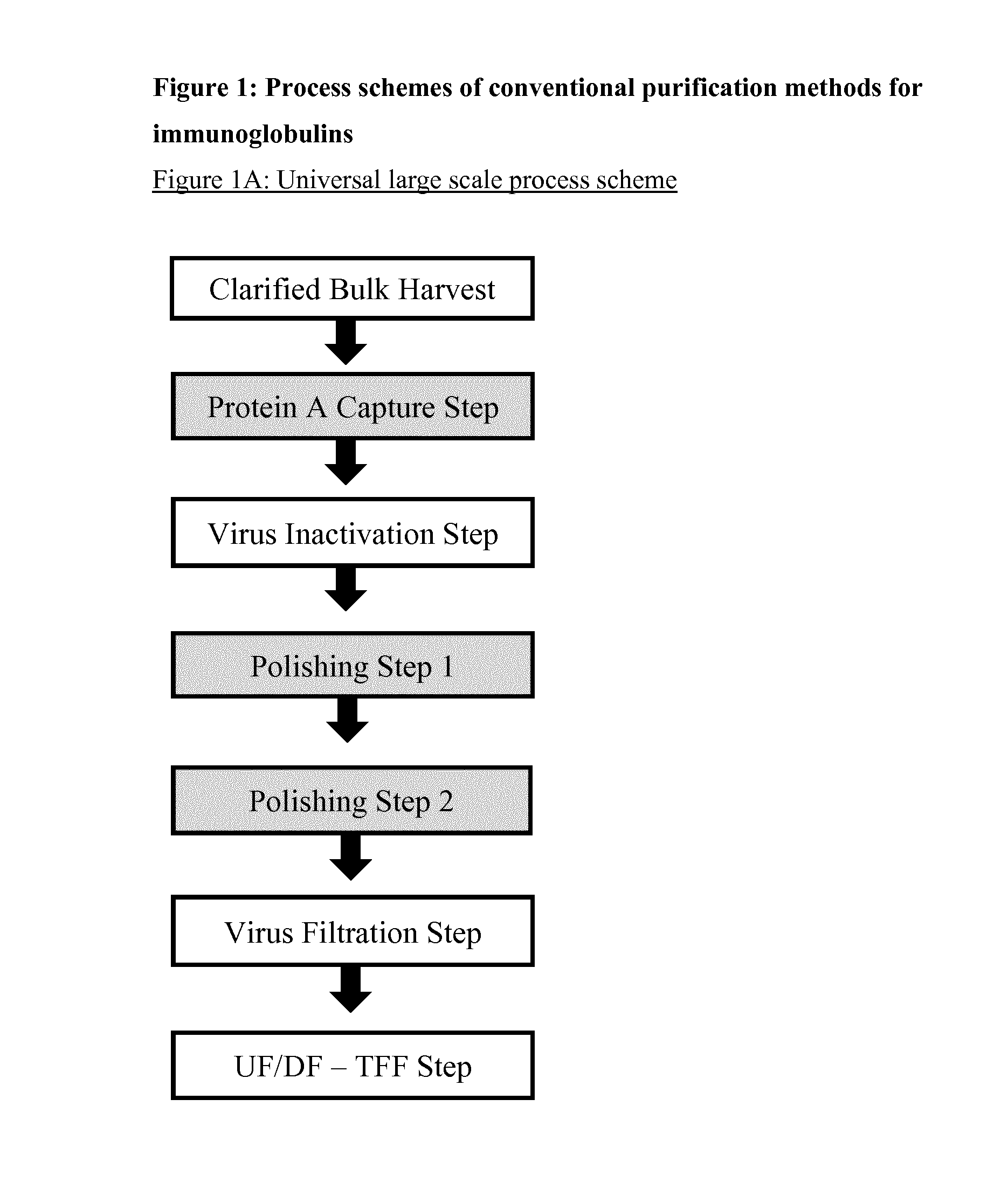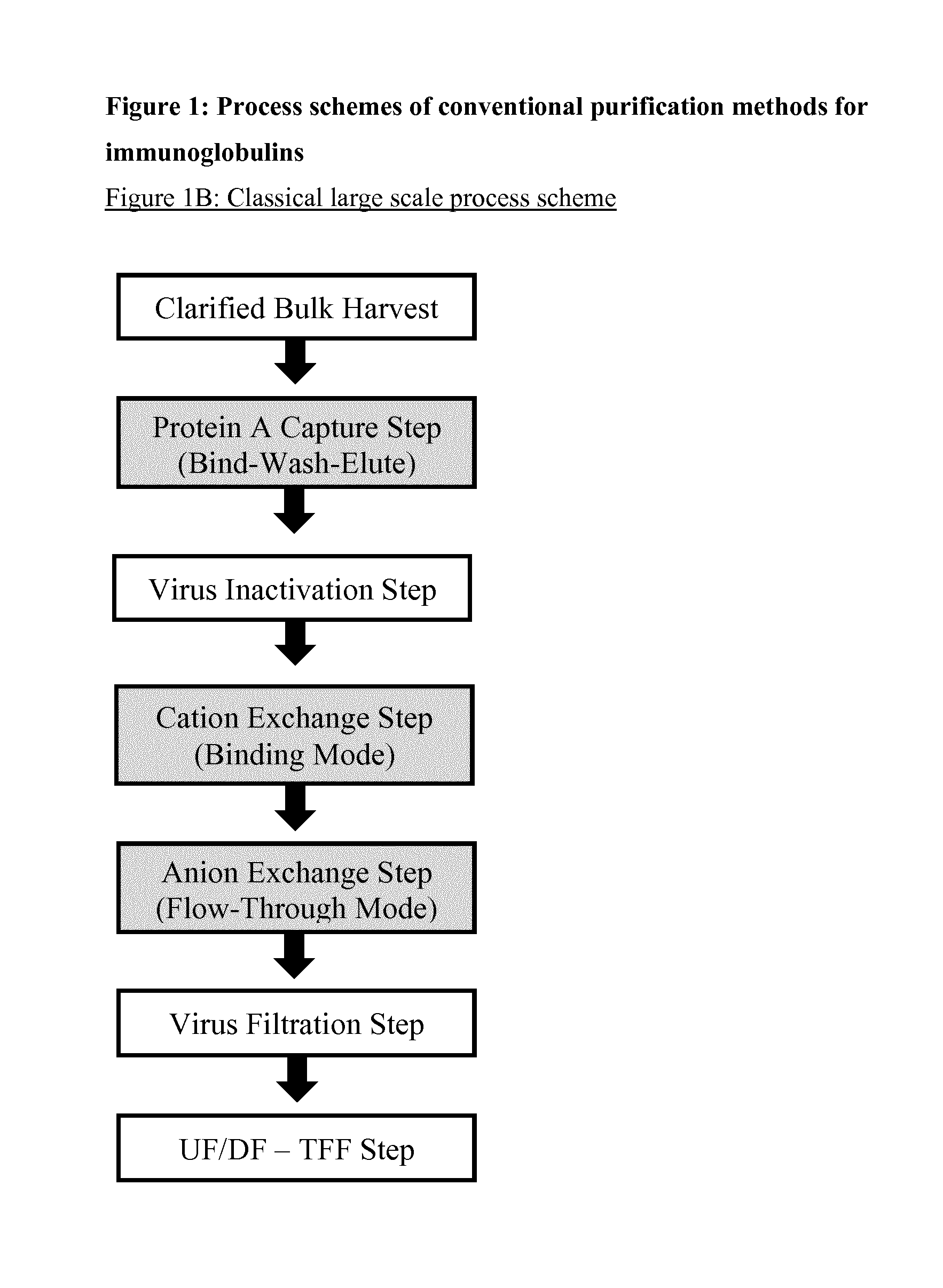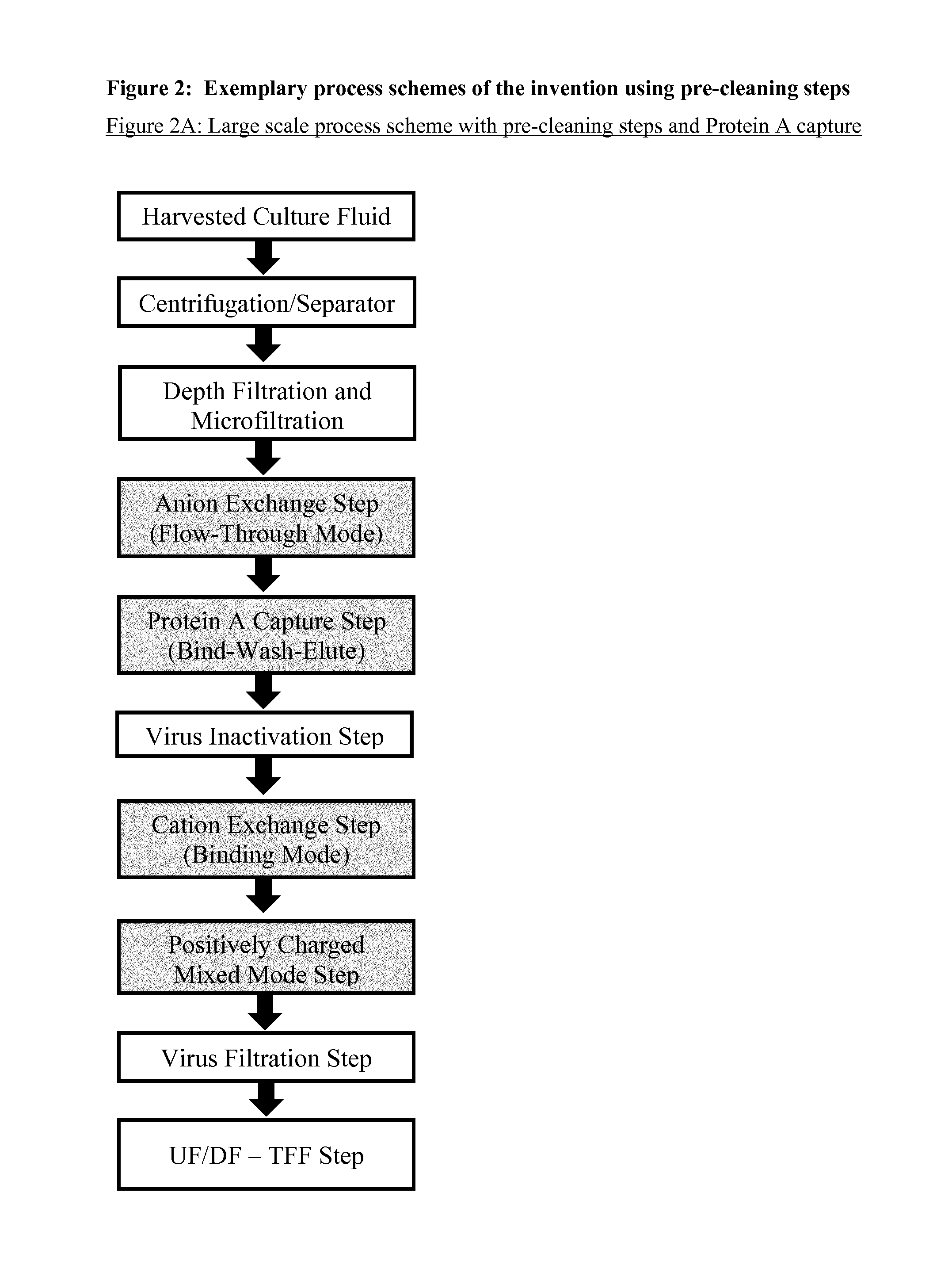Immunoglobulin purification using pre-cleaning steps
a technology of immunoglobulin and purification steps, applied in the field of immunoglobulin, can solve the problems of affecting the purification effect of immunoglobulins, affecting the safety of immunoglobulins, and consuming 40 to 50 percent of the overall downstream process cost, so as to achieve the effect of increasing viral safety
- Summary
- Abstract
- Description
- Claims
- Application Information
AI Technical Summary
Benefits of technology
Problems solved by technology
Method used
Image
Examples
example 1
Immunoglobulins and Cell Culture
[0234]The methods of the invention neither depend on specific antibodies nor on specific host cells used for the expression of the immunoglobulins. The same is true for the mode of expression and the selected culture conditions, which were optimized for maximum yields in the harvest. Different monoclonal antibodies were used during the development of the methods of the invention. They were successfully purified in various scales according to the methods of the invention. Most of the selected experiments presented in the Tables were performed with Rituximab, a mouse-human chimeric, anti-CD20, IgG1 antibody. In addition, some other experiments were performed with Adalimumab, a fully human, anti-TNFα, IgG1 antibody. Both antibodies were recombinantly expressed in CHO cells, which were propagated in fed-batch cultures of different scales. The experiments in the development phase were mainly performed with harvested culture fluid from a laboratory scale of...
example 2
Harvest of Cell Culture Fluid and Pre-Cleaning Filtration Steps
[0235]The following method is described for the 1000 L scale. Cells and cell debris were removed by separation using an LAPX404 separator (Alfa Laval) at 9600 rpm with a flow rate of 100 L / h. The separated culture fluid was serially filtered through the following filters (Pall Corporation): (i) Filter Capsule SXLP700416SP, (ii) Filter Capsule SXLPDE2408SP, and (iii) again Filter Capsule SXLPDE2408SP. Both depth filtration and microfiltration principles are achieved by this filter configuration. Prior to the first chromatography, the filtered culture fluid was additionally subjected to microfiltration using a Sartopore 2 / 0.2 μm membrane filter device (Sartorius).
example 3
Selection of Chromatography Resins (Table 1 and Table 2)
[0236]A relatively large collection of common and potentially useful process chromatography resins from different suppliers were tested for their efficiency in a wide screening programme as pre-cleaning step, capture step, and polishing step (see FIGS. 2A and 2C). This was performed during the early stage of development of this invention. The resins were packed in small columns (10-20 ml) and the samples comprising Rituximab were taken from the 100 L laboratory scale, either directly after separation and filtration (pre-cleaning and capture steps) or from a Protein A eluate (polishing steps in binding mode). A cation exchange chromatography pool obtained after a Protein A and pre-cleaning chromatography was used for the polishing steps in flow-through mode. The chromatographic runs were performed with an Äkta Purifier System (GE Healthcare).
[0237]Pre-Cleaning Resins:
[0238]Eight different anion exchange chromatography resins wer...
PUM
| Property | Measurement | Unit |
|---|---|---|
| pH | aaaaa | aaaaa |
| bed height | aaaaa | aaaaa |
| pH | aaaaa | aaaaa |
Abstract
Description
Claims
Application Information
 Login to View More
Login to View More - R&D
- Intellectual Property
- Life Sciences
- Materials
- Tech Scout
- Unparalleled Data Quality
- Higher Quality Content
- 60% Fewer Hallucinations
Browse by: Latest US Patents, China's latest patents, Technical Efficacy Thesaurus, Application Domain, Technology Topic, Popular Technical Reports.
© 2025 PatSnap. All rights reserved.Legal|Privacy policy|Modern Slavery Act Transparency Statement|Sitemap|About US| Contact US: help@patsnap.com



